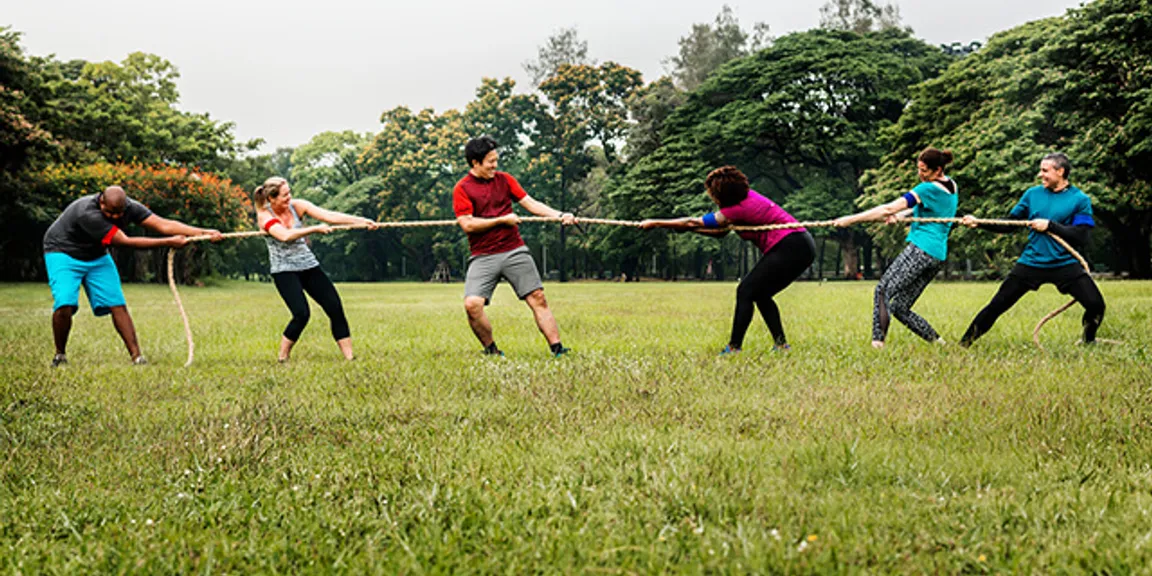Premium Team Challenge Course in Alabama: Boost Team Collaboration
Premium Team Challenge Course in Alabama: Boost Team Collaboration
Blog Article
Immerse Your Team in a Dynamic Challenge Program Experience for Growth and Unity
In the realm of team development and cohesion, the application of vibrant obstacle programs has actually become a compelling method to foster development and unity amongst group members. These experiential discovering settings offer an unique mix of psychological and physical challenges that push individuals beyond their comfort areas, urging them to work together, interact effectively, and depend on one an additional to browse the difficulties presented. The influence of such experiences extends far past the instant thrill of overcoming barriers, delving into the realm of individual and expert development - Team Challenge Course in Alabama. As groups face these trials together, they are usually confronted with the possibility to uncover untapped capacity, deepen bonds, and reveal new strategies for functioning jointly towards usual goals.
Benefits of Dynamic Obstacle Courses
Taking part in vibrant challenge programs uses groups a hands-on possibility to establish crucial communication and analytical abilities in a literally interesting environment. These programs supply an unique setting where employee are encountered with numerous obstacles that require partnership, efficient interaction, and fast decision-making to get over. By engaging in activities such as high ropes programs, team building games, and analytical obstacles, individuals are pushed out of their convenience areas, cultivating individual and group development.
One substantial benefit of dynamic challenge training courses is the improvement of interaction abilities within groups. With dealing with difficulties together, staff member learn to connect better, pay attention actively, and offer clear directions to each other. These experiences translate straight right into the work environment, boosting total synergy and efficiency. Furthermore, these courses advertise analytical abilities by calling for teams to think seriously, plan, and adapt to transforming situations right away. This capability to resolve problems successfully under pressure is a beneficial property in any type of professional setup. Generally, dynamic obstacle courses supply an all natural method to group advancement, combining exercise with skill-building to advertise unity and growth.
Team Building With Barrier Navigation
Barrier navigating on a vibrant challenge course urges team members to count on each other's staminas, problem-solving abilities, and resilience. By confronting physical and mental obstacles as a cohesive system, team participants discover to take advantage of individual skills for the cumulative advantage of the group.

Enhancing Communication Abilities and Trust
Building upon the foundation of strengthened interpersonal connections developed through overcoming challenges as a group, the focus currently shifts towards boosting communication abilities and promoting count on within the team dynamic. Efficient communication is necessary for ensuring that staff member recognize each other's point of views, objectives, and approaches. By participating published here in tasks that call for clear and concise communication, such as browsing a difficulty training course blindfolded or solving an issue with minimal spoken cues, employee can exercise energetic listening and effective expression of ideas.
Count on is one more critical element in team dynamics. Trusting your teammates indicates thinking in their capacities, intentions, and reliability. Through joint challenges that necessitate a high level of count on, such as a count on autumn or a ropes program where staff member count on each various other for safety and security, people find out to allow go of anxiety and uncertainty, fostering a feeling of unity and communication within the group. By sharpening interaction abilities and developing trust fund, teams can attain better synergy and performance.
Promoting Camaraderie and Unity
Unity amongst group members is the keystone of a cohesive and strong group dynamic, important for attaining common goals and cultivating a feeling of sociability. When team participants really feel united, they are extra likely to communicate successfully, trust one an additional, and work collaboratively in the direction of a common purpose. Fostering friendship within a team can be achieved via different tasks next page during a vibrant obstacle course experience. These activities encourage group members to count on each other, construct mutual regard, and appreciate the special strengths that each individual gives the group. By participating in obstacles that require participation and coordination, staff member develop a much deeper link and understanding of each other, causing a solid sense of unity. This unity not only enhances team effort throughout the challenge program yet also rollovers into the office, developing a encouraging and favorable environment where individuals feel valued and inspired to function in the direction of shared success.

Approaches for Long-Term Group Growth
By specifying specific targets, team members can straighten their initiatives towards a common you can find out more objective, fostering motivation and accountability. Encouraging open dialogue, supplying positive responses, and proactively paying attention to group members can enhance partnership and count on within the team.
Additionally, purchasing continuous learning and advancement possibilities can help employee get new abilities, stay involved, and adjust to advancing difficulties. Whether with training programs, workshops, or mentorship initiatives, offering methods for individual and expert development can add to the team's total success. Furthermore, identifying and celebrating success, both large and small, can enhance morale and enhance a positive group society. By implementing these methods constantly, groups can navigate barriers, embrace adjustment, and grow in the future.

Conclusion
To conclude, dynamic obstacle programs supply countless advantages for team development and unity. By involving in challenge navigating, employee can enhance their communication skills, build trust, and foster camaraderie. These experiences offer a platform for long-term group advancement and growth, causing a much more cohesive and efficient group dynamic. Accepting the difficulties presented in these courses can ultimately lead to a more powerful and more unified group.
In the world of team development and communication, the use of dynamic obstacle training courses has actually emerged as a compelling approach to promote development and unity among group participants. By engaging in tasks such as high ropes programs, team structure games, and analytic difficulties, individuals are pushed out of their convenience areas, fostering individual and team development.
In essence, group building with barrier navigation is an effective method to cultivate an interconnected and supportive group dynamic.

Report this page